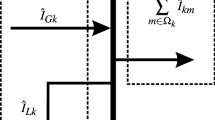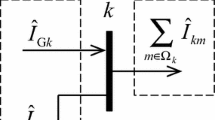Abstract
In this study, nature-inspired computational intelligence is exploited for active noise control (ANC) systems using variants of particle swarm optimization (PSO) algorithm and its memetic combination with efficient local search technique based on active-set (AS), interior-point (IP), Nelder–Mead (NM) and sequential quadratic programming (SQP) algorithms. In ANC, filtered extended least mean square algorithm is normally used for finding the optimal parameters of the linear finite-impulse response filter, which is more likely to trap in local minima (LM). The issue of LM problem is effectively handled with competence of nature-inspired heuristics by developing four variants of memetic computing approaches based on PSO-NM, PSO-AS, PSO-IP, and PSO-SQP in order to adapt the design variables of ANC with linear and nonlinear primary and secondary paths by taking input noise interferences of pure sinusoidal, random and complex random types. The comparative studies of proposed schemes through statistical performance indices have established the worth of the schemes in terms of accuracy, convergence and complexity parameters.


















Similar content being viewed by others
References
Shaaban M, Mohany A (2015) Passive control of flow-excited acoustic resonance in rectangular cavities using upstream mounted blocks. Exp Fluids 56(4):1–12
Mellet C, Létourneaux F, Poisson F, Talotte C (2006) High speed train noise emission: latest investigation of the aerodynamic/rolling noise contribution. J Sound Vib 293:535–546
George NV, Gonzalez A (2014) Convex combination of nonlinear adaptive filters for active noise control. Appl Acoust 76:157–161
George NV, Panda G (2012) On the development of adaptive hybrid active noise control system for effective mitigation of nonlinear noise. Signal Process 92(2):509–516
Kuo SM, Morgan DR (1996) Active noise control systems: algorithms and DSP implementations. Wiley, New York
Aslam MS, Raja MAZ (2015) A new adaptive strategy to improve online secondary path modeling in active noise control systems using fractional signal processing approach. Signal Process 107:433–443
Akhtar MT, Nishihara A (2015) Data-reusing-based filtered-reference adaptive algorithms for active control of impulsive noise sources. Appl Acoust 92:18–26
Matsuo MV, Seara R (2015) On the stochastic modeling of FxLMS-based narrowband active noise equalization systems. Signal Process 115:214–226
Chang CY, Shyu KK (2003) Active noise cancellation with a fuzzy adaptive filtered-X algorithm. In: Proceedings of the Institution of Electrical Engineering—circuits, devices and systems, vol 150, no 5, pp 416–422
Wang T, Gan W-S (2014) Stochastic analysis of FXLMS-based internal model control feedback active noise control systems. Signal Process 101:121–133
Chang CY, Louh FB (2007) Enhancement of active noise control using neural based filtered-X algorithm. J Sound Vib 305(1/2):348–356
George NV, Panda G (2013) Advances in active noise control: a survey, with emphasis on recent nonlinear techniques. Signal Process 93(2):363–377
Narasimhan SV, Veena S, Lokesha H (2010) Variable step-size Griffiths’ algorithm for improved performance of feedforward/feedback active noise control. SIViP 4(3):309–317
Narasimhan SV, Veena S (2013) New unbiased adaptive IIR filter: it’s robust and variable step-size versions and application to active noise control. Signal Image Video Process 7(1):197–207
Pavithra S, Narasimhan SV (2013) Feedback active noise control based on forward–backward LMS predictor. SIViP 7(6):1083–1091
Davari P, Hassanpour H (2009) Designing a new robust on-line secondary path modeling technique for feedforward active noise control systems. Signal Process 89(6):1195–1204
George NV, Panda G (2012) A particle-swarm-optimization-based decentralized nonlinear active noise control system. IEEE Trans Instrum Meas 61(12):3378–3386
Rout NK, Das DP, Panda G (2012) Particle swarm optimization based active noise control algorithm without secondary path identification. IEEE Trans Instrum Meas 61(2):554–563
Chang C-Y, Chen D-R (2010) Active noise cancellation without secondary path identification by using an adaptive genetic algorithm. IEEE Trans Instrum Meas 59(9):2315–2327
Pires EJS et al (2010) Particle swarm optimization with fractional-order velocity. Nonlinear Dyn 61(1–2):295–301
Couceiro MS et al (2012) Introducing the fractional-order Darwinian PSO. Signal Image Video Process 6(3):343–350
Gotmare A, Bhattacharjee SS, Patidar R, George NV (2017) Swarm and evolutionary computing algorithms for system identification and filter design: a comprehensive review. Swarm Evolut Comput 32:68–84
Ab Wahab MN, Nefti-Meziani S, Atyabi A (2015) A comprehensive review of swarm optimization algorithms. PLoS ONE 10(5):e0122827
Esmin AA, Coelho RA, Matwin S (2015) A review on particle swarm optimization algorithm and its variants to clustering high-dimensional data. Artif Intell Rev 44(1):23–45
Črepinšek M, Liu S-H, Mernik M (2014) Replication and comparison of computational experiments in applied evolutionary computing: common pitfalls and guidelines to avoid them. Appl Soft Comput 19:161–170
Mongus D, Repnik B, Mernik M, Žalik B (2012) A hybrid evolutionary algorithm for tuning a cloth-simulation model. Appl Soft Comput 12(1):266–273
Hrnčič D, Mernik M, Bryant BR, Javed F (2012) A memetic grammar inference algorithm for language learning. Appl Soft Comput 12(3):1006–1020
Raja MAZ, Zameer A, Kiani AK, Shehzad A, Khan MAR (2016) Nature-inspired computational intelligence integration with Nelder–Mead method to solve nonlinear benchmark models. Neural Comput Appl. doi:10.1007/s00521-016-2523-1
Raja MAZ, Khan JA, Chaudhary NI, Shivanian E (2016) Reliable numerical treatment of nonlinear singular Flierl–Petviashivili equations for unbounded domain using ANN, GAs, and SQP. Appl Soft Comput 38:617–636
Baymani M, Effati S, Niazmand H, Kerayechian A (2015) Artificial neural network method for solving the Navier–Stokes equations. Neural Comput Appl 26(4):765–773
Mansoori A, Effati S, Eshaghnezhad M (2017) An efficient recurrent neural network model for solving fuzzy non-linear programming problems. Appl Intell 46(2):308–327
Effati S, Mansoori A, Eshaghnezhad M (2015) An efficient projection neural network for solving bilinear programming problems. Neurocomputing 168:1188–1197
Raja MAZ, Samar R, Rashidi MM (2014) Application of three unsupervised neural network models to singular nonlinear BVP of transformed 2D Bratu equation. Neural Comput Appl 25(7–8):1585–1601
Masood Z, Majeed K, Samar R, Raja MAZ (2016) Design of Mexican Hat Wavelet neural networks for solving Bratu type nonlinear systems. Neurocomputing. doi:10.1016/j.neucom.2016.08.079
Chaquet JM, Carmona EJ, Corral R (2012) Using genetic algorithms to improve the thermodynamic efficiency of gas turbines designed by traditional methods. Appl Soft Comput 12(11):3627–3635
Chaquet JM, Carmona EJ (2012) Solving differential equations with fourier series and evolution strategies. Appl Soft Comput 12(9):3051–3062
Raja MAZ, Shah FH, Tariq M, Ahmad I (2016) Design of artificial neural network models optimized with sequential quadratic programming to study the dynamics of nonlinear Troesch’s problem arising in plasma physics. Neural Comput Appl. doi:10.1007/s00521-016-2530-2
Raja MAZ (2014) Stochastic numerical treatment for solving Troesch’s problem. Inf Sci 279:860–873
Raja MAZ, Niazi SA, Butt SA (2017) An intelligent computing technique to analyze the vibrational dynamics of rotating electrical machine. Neurocomputing 219:280–299
Dahi ZAEM, Mezioud C, Draa A (2016) A quantum-inspired genetic algorithm for solving the antenna positioning problem. Swarm and Evolutionary Computation 31:24–63
Dahi ZAEM, Mezioud C, Draa A (2016) On the efficiency of the binary flower pollination algorithm: application on the antenna positioning problem. Appl Soft Comput 47:395–414
Draa A (2015) On the performances of the flower pollination algorithm—qualitative and quantitative analyses. Appl Soft Comput 34:349–371
Raja MAZ, Khan MAR, Mahmood T, Farooq U, Chaudhary NI (2016) Design of bio-inspired computing technique for nanofluidics based on nonlinear Jeffery–Hamel flow equations. Can J Phys 94(5):474–489
Ahmad I, Ahmad F, Raja MAZ, Ilyas H, Anwar N, Azad Z (2016) Intelligent computing to solve fifth-order boundary value problem arising in induction motor models. Neural Comput Appl. doi:10.1007/s00521-016-2547-6
Ahmad I, Raja MAZ, Bilal M, Ashraf F (2016) Neural network methods to solve the Lane–Emden type equations arising in thermodynamic studies of the spherical gas cloud model. Neural Comput Appl. doi:10.1007/s00521-016-2400-y
Raja MAZ, Shah AA, Mehmood A, Chaudhary NI, Aslam MS (2016) Bio-inspired computational heuristics for parameter estimation of nonlinear Hammerstein controlled autoregressive system. Neural Comput Appl. doi:10.1007/s00521-016-2677-x
Kashkaria BS, Syam MI (2017) Evolutionary computational intelligence in solving a class of nonlinear Volterra–Fredholm integro-differential equations. J Comput Appl Math 311:314–323
Ahmad I, Raja MAZ, Bilal M, Ashraf F (2016) Bio-inspired computational heuristics to study Lane–Emden systems arising in astrophysics model. SpringerPlus 5(1):1866
Azami H et al (2013) A hybrid evolutionary approach to segmentation of non-stationary signals. Digital Signal Process 23(4):1103–1114
Mahmood AF, Abd-Alsalam AM (2014) Automatic brain MRI slices classification using hybrid technique. Al-Rafidain Eng J 22(3):198–212
Madikeri SR (2014) A fast and scalable hybrid FA/PPCA-based framework for speaker recognition. Digital Signal Process 32:137–145
Wu M-S (2014) Genetic algorithm based on discrete wavelet transformation for fractal image compression. J Vis Commun Image Represent 25(8):1835–1841
Sam, “Another Particle Swarm Toolbox”, 01 Dec 2009 (Updated 01 Apr 2014), File ID: #25986, Version: 1.31
Author information
Authors and Affiliations
Corresponding author
Ethics declarations
Conflict of interest
All the authors of the manuscript declared that there are no potential conflicts of interest.
Human and animals rights
All the authors of the manuscript declared that there is no research involving human participants and/or animal.
Informed consent
All the authors of the manuscript declared that there is no material that required informed consent.
Rights and permissions
About this article
Cite this article
Raja, M.A.Z., Aslam, M.S., Chaudhary, N.I. et al. Design of hybrid nature-inspired heuristics with application to active noise control systems. Neural Comput & Applic 31, 2563–2591 (2019). https://doi.org/10.1007/s00521-017-3214-2
Received:
Accepted:
Published:
Issue Date:
DOI: https://doi.org/10.1007/s00521-017-3214-2




